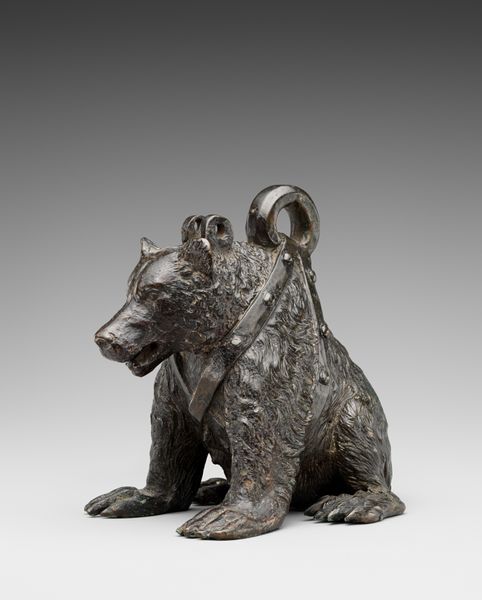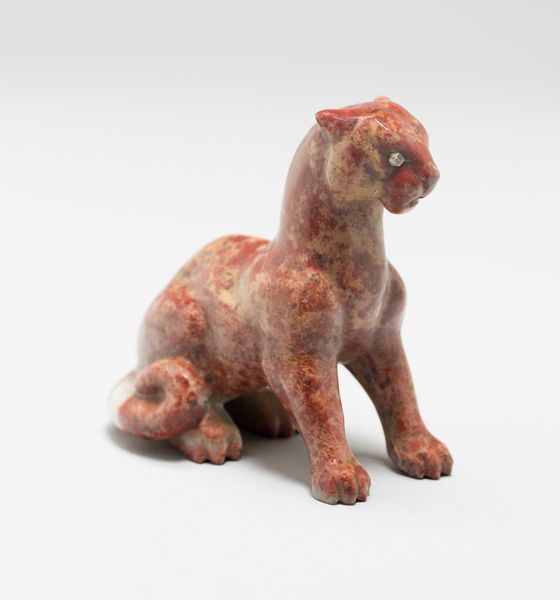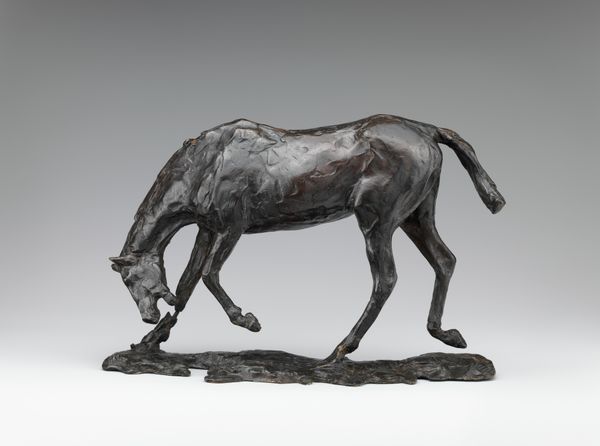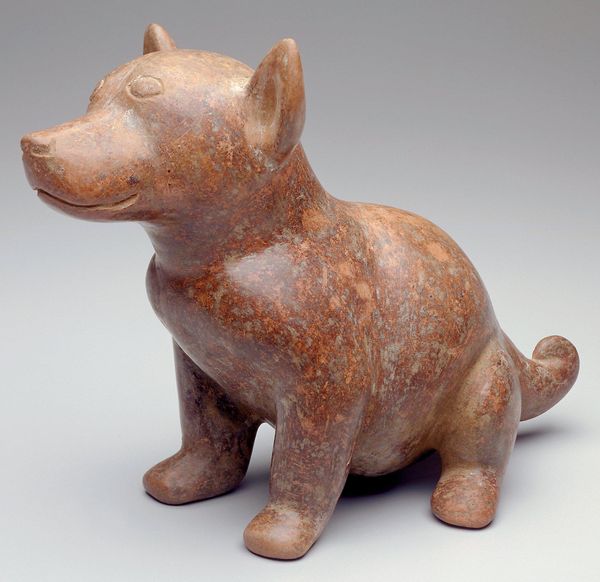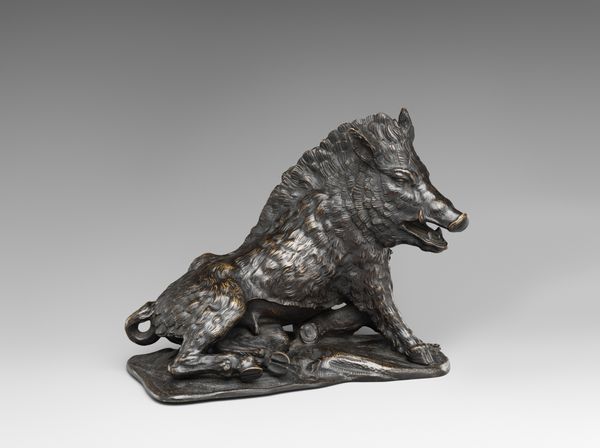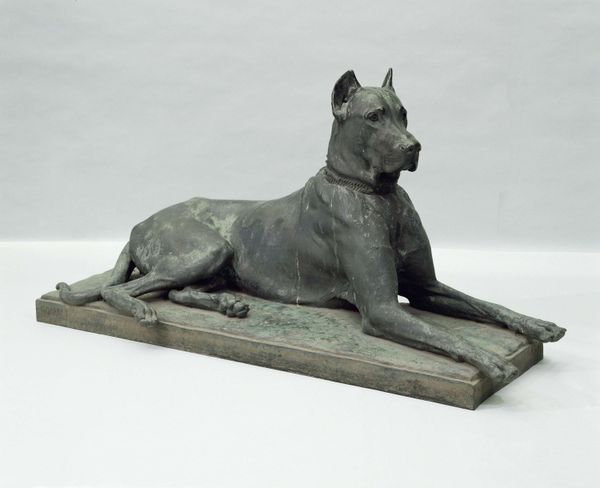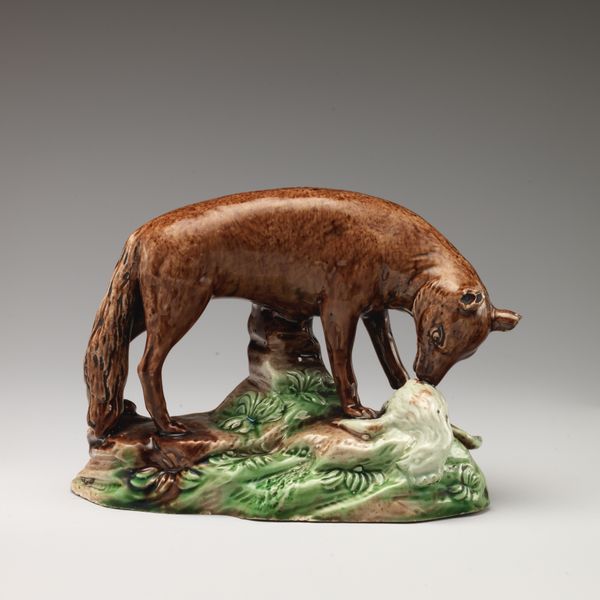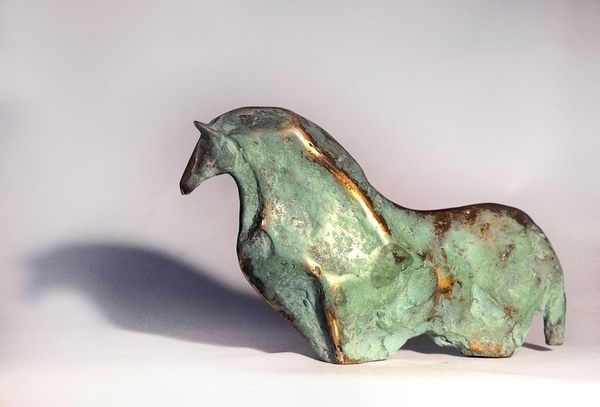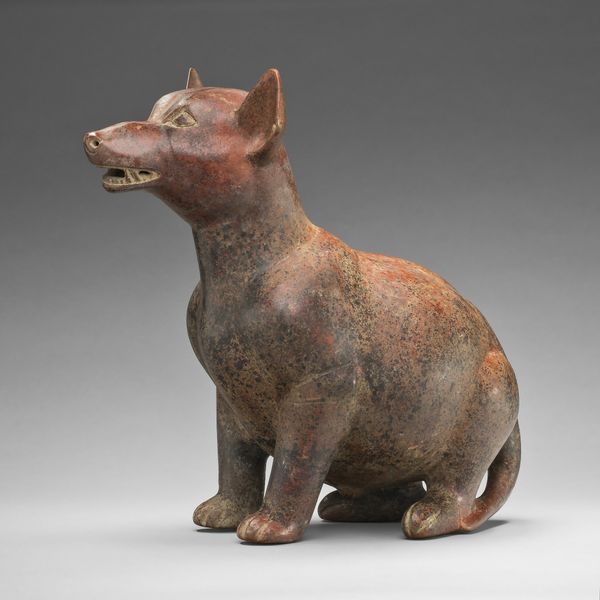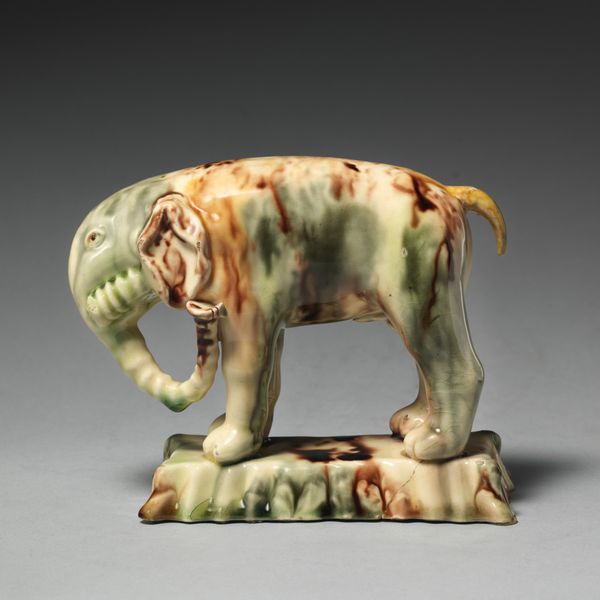
bronze, sculpture
#
sculpture
#
bronze
#
figuration
#
ancient-mediterranean
#
sculpture
Dimensions: 2 1/8 x 3 5/8 x 7/8 in. (5.4 x 9.21 x 2.22 cm)
Copyright: Public Domain
Curator: Well, hello there! Welcome to this fascinating bronze sculpture of a Dog. We don't know the exact date of its creation, but this artifact, crafted in Djenne, now resides here at the Minneapolis Institute of Art. What do you think? Editor: I find the texture immediately striking. The surface is layered with greens and browns that whisper of age. It gives me a feeling of unearthed history, yet, at the same time, it presents an extremely stylized representation of "dogness"—almost to the point of symbolic reduction. What might the dog represent, historically and culturally? Curator: Dogs, as we know, hold a powerful symbolism across diverse cultures and contexts. In many African societies, dogs can symbolize loyalty, guidance, protection, and can even be linked to the spiritual world. Some even see them as intermediaries between humans and the divine. I can imagine how in a lot of creation stories across different cultures, dogs appear as a trickster or an emissary to another world. Editor: Right! In the Djenne context, this form is likely tied to societal hierarchies and perhaps gender roles. After all, access to and ownership of bronze was certainly impacted by the historical sexual division of labor. Curator: It’s wild to consider all of this as I stand in front of what feels like a super personal and affectionate portrayal of a canine! Editor: Exactly. These pieces always resist singular narratives, which is exactly why they still feel alive! To analyze the visual language and material realities of art such as this one opens paths for decolonizing art history. Curator: What do you mean? Editor: By this I mean recognizing that non-Western works such as this Djenne sculpture deserve to be understood and interpreted on their own terms, without simply slotting them into the trajectory of art movements developed within a Western art historical framework. Curator: Right, like how we assign value to something that's old and Western... And, sometimes, we treat artifacts from other regions with a more casual perspective because they come from a region that hasn’t been thought of, for some, as part of “art history.” This shifts the power from us in the art world, and reminds me we must allow these works to retain their individual voices and narratives. It helps, even on a curatorial level, to understand that art and the discourse about art is for everyone! Editor: Precisely. Hopefully visitors will see "Dog" anew, ready to dismantle some art world boundaries in their own way.
Comments
No comments
Be the first to comment and join the conversation on the ultimate creative platform.
